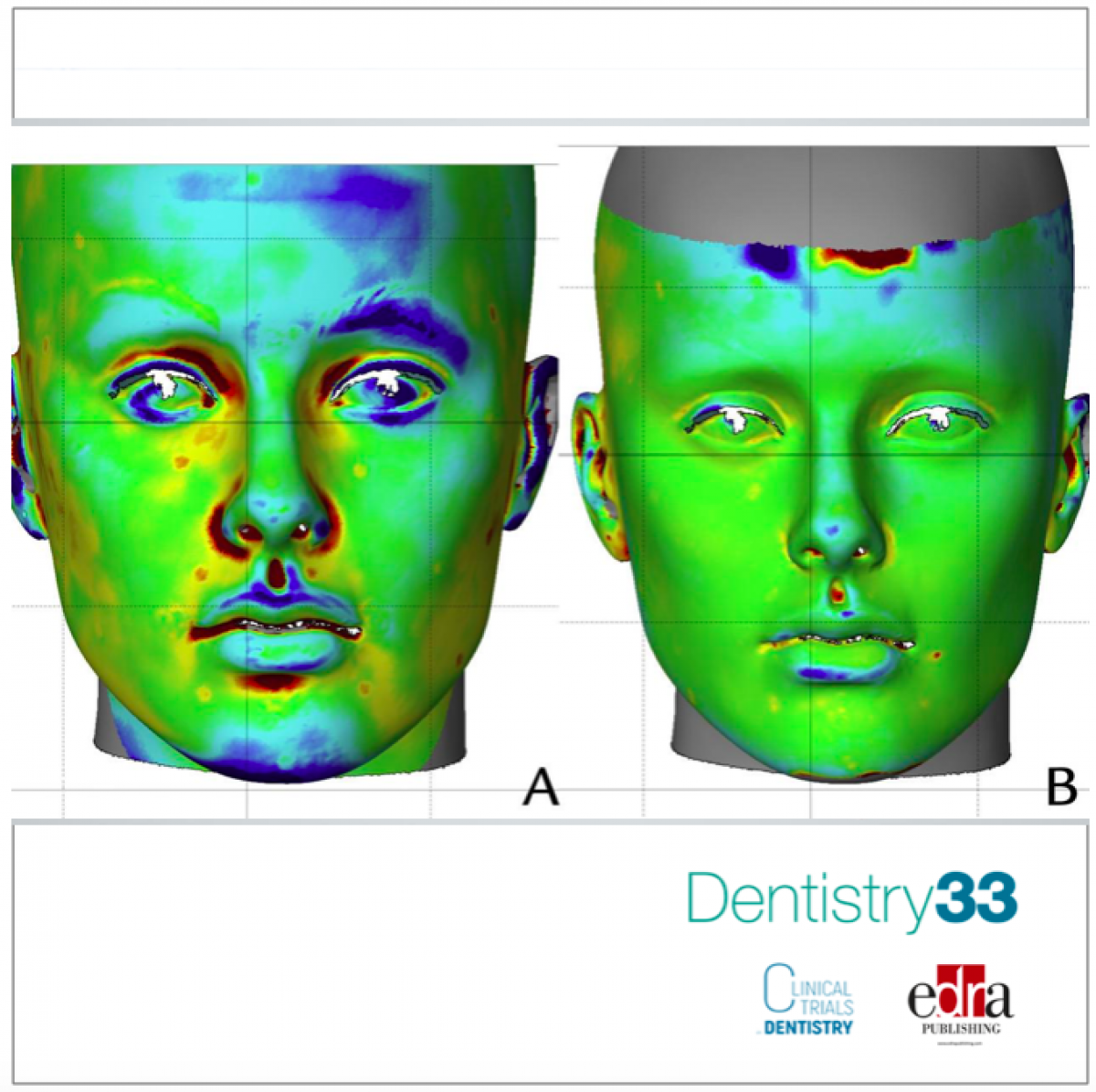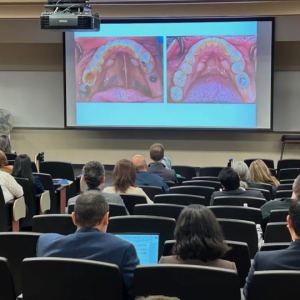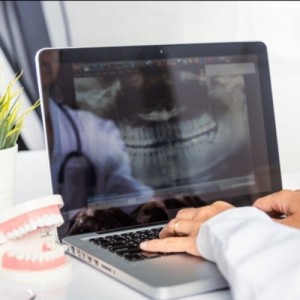
2 face-scanning systems: the evaluation of the 3D error
Co-authors: A. Comba, U. Josic
Lorenzo Breschi
Traditional methods for planning and evaluating esthetic dental procedures rely on 2-dimensional (2D) photographs, which can limit the ability to evaluate and represent the patient’s head and face. Different innovative techniques for creating 3D face models have been recently published, including free user-friendly apps and software programs for mobile devices, tablets, and computers. However, little is known about the trueness of these free software programs and apps for facial scanning. Therefore, Gallardo et al. evaluated the trueness of 3D facial scanning by using Bellus3D and +ID ReCap Photo.
Materials and methods
The authors used a mannequin which was scanned with a noncontact structured blue light 3D scanner (ATOS Core; Zeiss CO) and used as the experimental system (the control group). Two facial scanning methods were used for the experimental groups: a facial scanning app (FaceApp) and the Plus identity photogrammetry methodology (ReCap Photo). In both methods, image capturing was performed under the same natural lighting conditions with a smartphone (iPhone X) calibrated with an app. Trueness was assessed from the 3D measurement error, which was calculated with a 3D mesh analysis software program (GOM Inspect). Two comparison groups were created: ATOS versus Bellus3D (B3D) and ATOS versus +ID with ReCap Photo (+IDRP). The results were statistically evaluated by using the Shapiro-Wilk and paired t tests (α=.05).
Results
The authors observed that B3D had a greater error than +IDRP in measuring the regions of the upper and lower lips, nose, and mentum (P<.01). This error was statistically higher for +IDRP (P<.01) in the right face area, but the left face area showed no statistically significant difference between the evaluated scanning methods (P=.93). The 3D global trueness of B3D was 0.34 ±0.14 mm, and that of +IDRP was 0.28 ±0.06 mm.
Discussion
The purpose of this study was to compare the 3D measurement error of 2 facial scanning methods: B3D versus +IDRP. A mean overall surface difference was observed between 3D data tested in all the anatomic regions, except for the left face area. The results showed a high 3D error in both systems when the lateral areas were evaluated (right and left face). These results should be interpreted cautiously because even though these systems are capable of 180-degree capture, the technique used in this study was not designed to capture the ear region. In the present study, major deviations were observed in lateral areas. An accurate central facial area, including the mouth, seems to be achievable with these methods, which might also be acceptable tools for diagnosing or planning smile designs
Conclusion
Both investigated methods evaluated in this study provided a 3D model of the face with clinically acceptable trueness and can be considered as reliable tools for planning esthetic restorations.
Clinical implications
This study compared the trueness of 2 affordable methodologies for facial scanning and contributes to the knowledge of imaging science in dentistry by allowing the clinician to plan an accurate guided treatment based on the patient’s face.
For additional information: Evaluation of the 3D error of 2 face-scanning systems: An in vitro analysis.
 Related articles
Related articles
Editorials 02 October 2025
U-M School of Dentistry hosts national symposium on digital dentistry education
The University of Michigan School of Dentistry hosted a national Digital Dentistry Educators Symposium last week that drew faculty and leaders from 35 dental schools around the country.
Digital Dentistry 29 August 2025
Digital dentistry: The new state of the art — Is it disruptive or destructive?
Summarizing the new state of the art of digital dentistry, opens exploration of the type and extent of innovations and technological advances that have impacted – and improved – dentistry.
Endodontics 15 August 2025
Feasibility of Implementing Digital Dentistry Section in Dental Clinic of a Military Centre
Digital dentistry is not the wave of the future, it is happening now. Whether a dentist embraces the new technology determines the quality of treatment and possibly his future; for this reason,...
Digital Dentistry 23 July 2025
Contemporary Digital Dentistry for Complex Cases in the Anterior Maxilla
To demonstrate how contemporary digitally driven workflow can enhance outcomes for complex esthetic dental cases, focusing on three distinct clinical scenarios involving implant placement, esthetic...
 Read more
Read more
Editorials 10 October 2025
With proud smiles and crisp white coats, ninety-three learners from the DDS Class of 2029 and the International Dentist Pathway Class of 2028 marked the start of their dental careers at the UCSF...
Periodontology 10 October 2025
Continuous professional development (CPD) in Periodontology refers to the overall framework of opportunities that facilitate a life-long learning practice, driven by the learner-practitioner and...
TheraBreath, the #1 alcohol-free mouthwash brand in the U.S.*, has introduced a new line of dentist-formulated, clinically tested toothpastes designed to support professional oral care...
News 10 October 2025
New officers and trustees were installed at the Minnesota Dental Association’s Leadership Conference on September 19 in Minneapolis.
News 10 October 2025
Smartee Denti-Technology today announced that Professor Gang Shen, its Chief Scientist and Executive President of TaiKang ByBo Dental, has once again been named to the World’s Top 2% Scientists...















